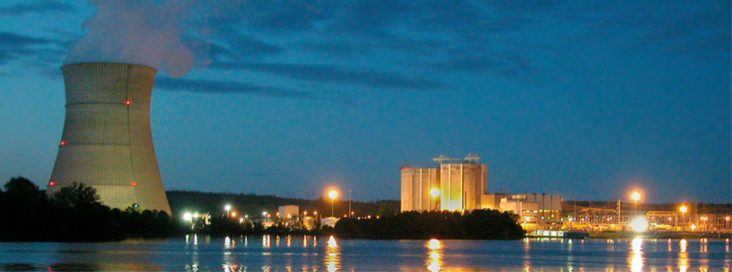Nuclear outages fall 10% in summer 2017
by September 28, 2017 9:55 am 297 views

Outages at U.S. nuclear power plants were 10% lower or on average 4.6 gigawatts in the summer of 2017 (June through August), compared to the same period in 2016, according to the U.S. Energy Information Administration. Outages were an average of 7.4 gigawatts in June, 3.8 gigawatts in July and 2.6 gigawatts in August. On Aug. 14, 0.4 gigawatts of capacity was off line.
Nuclear outages are lowest in the summer and winter when electricity demand is high. Some outages are scheduled and some aren’t, and they can range from partial to full outages. “Most scheduled outages take place during the fall and spring when electricity demand is lower,” according to the EIA. “Nuclear power plants typically refuel every 18 to 24 months. Other maintenance work, such as repairs and power uprates (operational changes that allow existing plants to produce more electricity), is often scheduled at the same time as refueling to minimize downtime.”
An unscheduled or forced shutdown happens as a result of equipment failure, operational error, fuel shortages or weather. On March 23, the newest U.S. nuclear power plant, Watts Bar Unit 2, in southeastern Tennessee, shut down because a steam condenser failed after five months in operation. It came back online Aug. 11. On June 5, Comanche Peak Unit 2, near Fort Worth, Texas, had to shut down for repairs on its main generator. It restarted Aug. 15.
Hurricane Irma led to a shutdown of Turkey Point and St. Lucie nuclear power plants in Florida. Turkey Point is along the coast in Miami and started reducing its output Sept. 9. The St. Lucie plant on the coast near West Palm Beach also reduced power. Turkey Point and St. Lucie were operating at 100% output Sept. 18 and Sept. 14, respectively.
